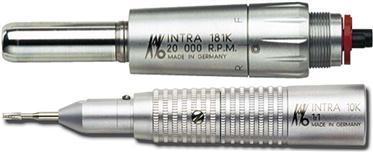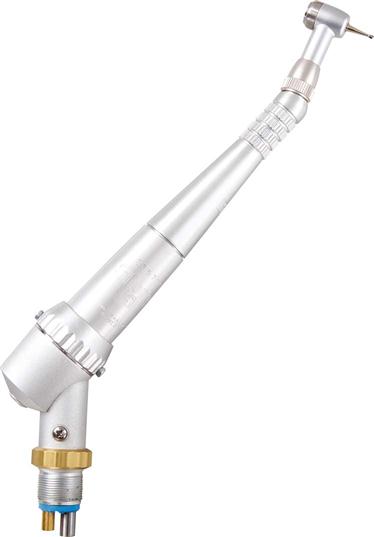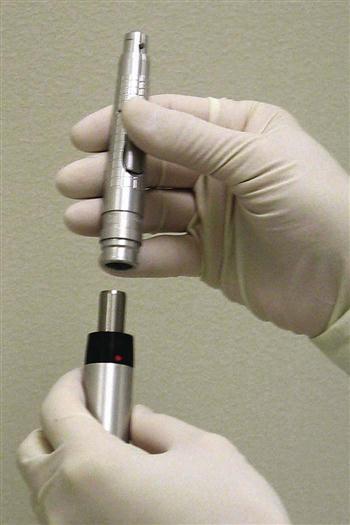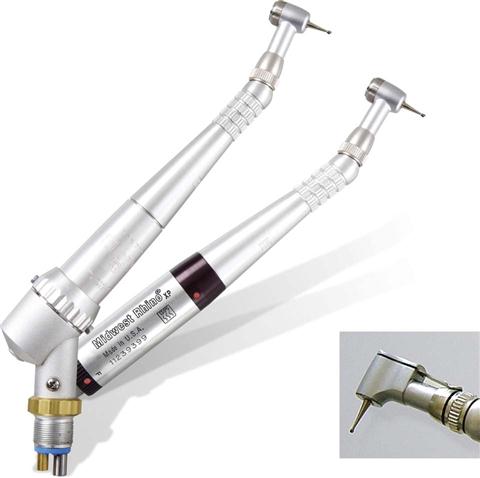Dental Handpieces and Accessories
Learning Outcomes
On completion of this chapter, the student will be able to achieve the following objectives:
• Pronounce, define, and spell the Key Terms.
• Discuss the historical importance of the dental handpiece.
• Describe the low-speed handpiece and its uses in dentistry.
• Describe the attachments used with the low-speed handpiece.
• Describe the high-speed handpiece and its uses in dentistry.
• Review other handpieces used in dentistry.
• Describe rotary instruments and explain how they are used.
• Describe the composition, shape, and uses of carbide and diamond burs.
Performance Outcomes
On completion of this chapter, the student will be able to meet competency standards in the following skills:
• Identify dental handpieces and correctly attach them to the dental unit.
• Identify handpiece accessories and correctly attach them to the low-speed handpiece.
Electronic Resources
![]() Additional information related to content in Chapter 35 can be found on the companion Evolve Web site.
Additional information related to content in Chapter 35 can be found on the companion Evolve Web site.
![]() and the Multimedia Procedures DVD
and the Multimedia Procedures DVD
Key Terms
Bur A steel or tungsten carbide rotary cutting instrument.
Console (KON-soel) Freestanding cabinet that holds contents or control devices, such as the laser handpiece.
Dental handpiece An electrical instrument used to hold rotary instruments.
Flutes Blades on the working end of a finishing rotary instrument that resemble pleats.
Laser Fiberoptic cable that produces a laser light.
Mandrel (MAN-drul) Metal shaft on which a sandpaper disc or other abrasive materials are mounted.
Rotary (ROE-tuh-ree) Part or device that rotates around an axis.
Shank Part of an instrument in which the handle attaches to the working end.
Torque (tork) Twisting or turning force.
Ultrasonic (ul-truh-SON-ik) Referring to mechanical radiant energy of water and sound vibrations used to break down material or tissue.
If you understand the concept of the home power tool, where a drill and a bit are used to create an outline or finish a piece of wood, then you will understand the use of a dental handpiece and its attached rotary instruments. A rotary is a part or device that rotates around an axis. When attached to a specific handpiece, rotary instruments operate at different speeds to accomplish different functions in the cutting, polishing, and finishing of tooth structure in the restoration process.
Evolution of Rotary Equipment
Rotary instruments were introduced to dentistry in the 1940s to complement the use of hand instruments in the cutting, grinding, and polishing procedures of operative dentistry. A significant advancement in the design and construction of the dental handpiece was the addition of electricity as a power source for rotary instruments.
The first dental handpiece was operated by a long belt running over a series of pulleys then back to the motor, continuously moving the inserted rotary instrument. From the 1940s through the 1950s, the development of diamond cutting burs and the invention of tungsten carbide burs greatly improved the way dentists could cut into and remove hard tooth structure. Further study of diamond and carbide burs showed that these rotary instruments performed better at higher speeds. The air-driven turbine handpiece was introduced to dentistry in the 1950s.
Dental Handpieces
The dental handpiece is the most frequently used instrument in restorative dentistry. The two most common types of dental handpieces are the low-speed and the high-speed handpiece. The dental unit provides electrical power to the handpiece by rotating the bur, which completes the actual cutting or polishing of tooth structure and castings.
Low-Speed Handpiece
The low-speed handpiece, often referred to as the straight handpiece because of its straight-line design, is one of the most versatile handpieces used by the dental team (Fig. 35-1).
The low-speed handpiece is designed in two sizes: standard length mostly used in operative procedures and in the laboratory, and the “shorty,” which is used for prophylaxis (Fig. 35-2). Available speeds range from 10,000 to 30,000 rotations per minute (rpm). The rotary instrument (bur) can be positioned to operate with forward or backward movement.
Uses of the Low-Speed Handpiece
Clinical
Laboratory
• Trimming and contouring of temporary crowns
To adapt the low-speed handpiece for clinical and laboratory procedures, a variety of attachments, or sleeves, that fit onto the handpiece can be used.
Straight Attachment
The straight attachment slides onto the low-speed motor and locks into place (Fig. 35-3). The straight attachment is most commonly used for laboratory procedures, to trim provisionals and additional acrylic prostheses made outside of the mouth.
Contra-Angle Attachment
The contra-angle attachment slides directly onto the low-speed motor and locks into place (Fig. 35-4). The angle of this attachment is designed to allow the operator intraoral access with easier adaptation to tooth surfaces. This attachment holds latch-type rotary instruments, endodontic files, prophylaxis cups, and mandrels (see later in chapter for discussion).
Prophylaxis Angle
Prophylaxis attachments, or “prophy angles,” are used during polishing procedures to hold the prophy cup and the bristle brush. The most common type of prophy angle is the plastic disposable prophy angle, which is discarded after a single use (Fig. 35-5). This attachment is available with a rubber cup or a bristle brush already in place.
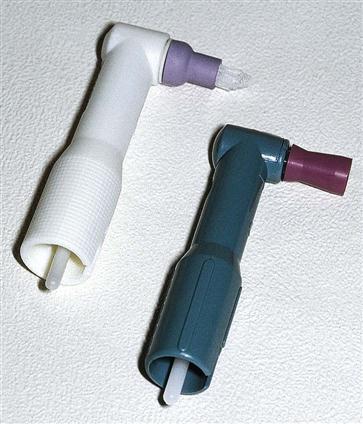
High-Speed Handpiece
The dentist uses the high-speed handpiece in all restorative procedures. In contrast to the low-speed handpiece, the high-speed handpiece does not have attachments. The only additional item placed in this handpiece is the rotary instrument (bur) itself. The high-speed handpiece operates from air pressure and reaches speeds up to 450,000 rpm (Fig. 35-6).
The dentist will use the high-speed handpiece to remove diseased tooth structure or replace a faulty restoration. Final modifications and tooth preparation are then accomplished with the use of a low-speed handpiece and hand cutting instruments.
Uses of the High-Speed Handpiece
Water Coolant System
The extreme high speed of the bur or stone attached to the high-speed handpiece can generate frictional heat on a tooth, possibly causing damage to the pulp. To protect against pulp damage, the high-speed handpiece is designed to handle a water coolant system, so that the tooth and the bur are constantly sprayed with cool water while operating. The water spray also helps remove debris from the tooth preparation and allows the operator better visibility.
Bur Adaptation
Burs for high-speed handpieces have a different locking system than those for low-speed handpieces. High-speed handpieces operate with a friction-grip device.
Many high-speed handpiece designs are on the market, and the method of inserting and removing burs from the handpiece varies according to the manufacturer’s design. Regardless of the manufacturer, all high-speed handpieces use the friction-grip method to hold burs, stones, and polishing devices. Some older handpieces require the use of a bur-changing device. For others, with a release built into the head of the handpiece, a bur-changing device is not required (Fig. 35-7).
Fiberoptic Lighting
High-speed handpieces are equipped with a fiberoptic light that is mounted in the head of the handpiece. Light por/>
Stay updated, free dental videos. Join our Telegram channel

VIDEdental - Online dental courses


